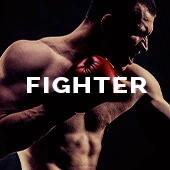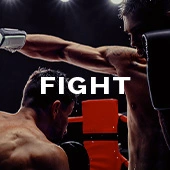By Corey Erdman
It's been said that boxing is the sport all others aspire to be.
There are certainly elements of boxing that other sports are happy to not deal with, none moreso than the puzzling endings and controversy that judging can produce, as seen on Saturday in Brisbane. But the bout between Manny Pacquiao and Jeff Horn again displayed boxing's unique ability to create one-off events that can permeate the mainstream audience.
Top Rank's first foray back on ESPN produced a massive viewership, notching a 1.8 metered market rating, and a 2.4 overnight rating, making it the highest rated fight on cable this decade. The live attendance was also the largest of Pacquiao's career, with 51,052 fans packing the rugby stadium. All night long the fight was a trending topic on worldwide Twitter, and has dominated sports pages—even if it was to discuss whether the result was a robbery or not.
According to a recent Sports Business Journal story, boxing is one of three sports television properties (along with the Olympics and college football) to have actually gained youth viewership over the past ten years, and Top Rank and ESPN targeted that audience by offering a live stream as well, which generated 392,000 unique viewers.
Prior to Premier Boxing Champions' experiment with airing fights on cable, boxing went many years without ever airing a fight of major significance, let alone a major fight, anywhere but behind a paywall. It made being a boxing fan an even more expensive and exhaustive process, and cut out the “casual” fans. Sports bars were mostly prevented from airing regular Showtime or HBO fights, limiting accessibility and removing the age-old social tradition of going to the bar to catch the fight with your friends. By contrast, Saturday's big fight was pretty much impossible to miss, no matter where you wanted to watch it or on what device.
Pacquiao-Horn was exactly 96 years to the weekend after the iconic battle between Jack Dempsey and Georges Carpentier. Though boxing was arguably the most popular sport in the United States at the time, Dempsey-Carpentier showed just how big boxing could be, and was perhaps the most innovative sporting event ever. The fight produced the sport's first million dollar gate, with more than 80,000 jamming into an outdoor arena in Jersey City.
More importantly, promoter Tex Rickard decided to attempt something never done on a large scale—broadcast the fight over the radio. Television was still years away, and fight films were still scarce and difficult to acquire. Rickard eschewed the antiquated thinking that giving something away for free would stifle live attendance, and as a result, turned the fight into a worldwide phenomenon. It's estimated that in the United States, 300,000 people listened to the fight—many gathering around carts on the streets of New York and New Jersey with radios blasting the commentary. It would launch RCA as a company, and change the broadcast industry forever.
"Not only did Rickard understand the psychology of the use of money, he also was a master of dramatic symbolism. The people sought to attract to boxing were not particularly lovers of a good fight, but rather men and women, especially wealthy ones, who were interested in the drama inherent in a battle of contrasts," wrote Randy Roberts in his biography of Dempsey, "The Manassa Mauler."
Rickard understood what Bob Arum understands, and what we have come to know about boxing. Personalities sell, and fighters like Pacquiao can and have been able to capture public adoration in a way other athletes cannot.
"Why did Muhammad Ali rise to his level of significance as a crusader for social justice and as a social symbol? It was because he was a boxer. If he were any other kind of athlete, he could have never been Muhammad Ali," HBO commentator Jim Lampley once told me for a story on VICE Sports. "But boxers can achieve that kind of social significance because even the most uninitiated 10-year-old fan can look into the ring and see this isn't a game. They are not playing here. These men fight for their lives. And so the strength of that metaphor makes them more important in terms of their connection to society."
Three of the most important athletes with regards to racial progress have been boxers—Jack Johnson, Joe Louis, and Ali. The highest paid athlete in the world, as of August 26 of this year, will once again be a boxer, Floyd Mayweather. Globally, there are many countries in which the most famous athlete—or even person altogether—is a boxer, such as Pacquiao in the Philippines.
Even though the health of the sport is discussed ad nauseum, everyone is always more than happy to co -opt boxing imagery and history to help tell a story. The Sweet Science is so ingrained in our culture that almost everything can be described in boxing terms--”throw in the towel,” “roll with the punches,” “beat to the punch,” and so many more are part of our everyday metaphorical lexicon. When other sports need to hype up a game or match, it's always a “big fight feel” or a “heavyweight slugfest.”
But there's still nothing bigger than an actual big fight.
"It really still is the sport that all sports aspire to. Sure, you can have our old Ray Mercer in MMA, and we'll take Conor McGregor in his prime. We're the sport, still," said Michael Ezra, editor of the recently released boxing essay collection The Bittersweet Science.
Boxing will always maintain its ability to attract a lot of eyes for a big event—even if those eyes don't exactly understand what they just watched.


